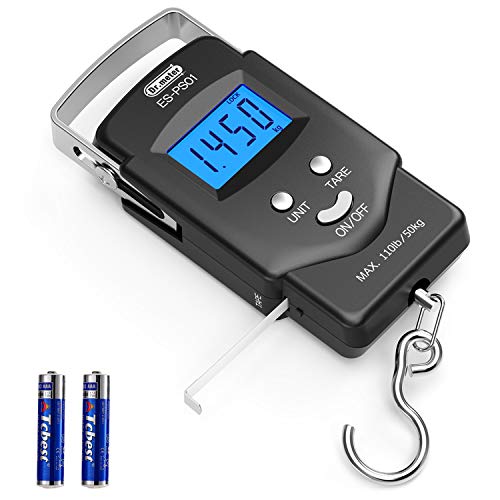Smallie season is here!
With the warming water, I’ve pretty much given up on trout for the remainder of 2008. While I expect to hit the North Branch at least once trout season officially starts again in the October timeframe, I’m done with trout fishing for now. But the wonderful thing is that there is an entire season of smallmouth bass fishing ahead of me. In fact, at the risk of being drummed out of Trout Unlimited, I have to admit that I would much rather catch a smallie than a trout. They are just such tough fighters!
My first smallie destination of the year was the Rivanna River down near Charlottesville. In his book, the Flyfisher’s Guide to Virginia, Hart discusses several access points on the Rivanna. I had intended to go to the Palmyra access point, which he indicated was acceptable wading. Since I needed to swing by a fly shop and pick up some more stuff I didn’t need, I checked in with the Albermarle Angler fly shop before going down. They recommended I go to Woolen Mills access point off E. Market St. to fish for a few hours until they opened. I immediately jumped on this is that would give me an option to go someplace else in the afternoon.
I staggered out of bed at 0430 and pointed the truck South. Two hours later, I rolled down E. Market St looking for a place to park. This road leads into a tight residential neighborhood that dead ends at Woolen Mills. There are “no parking” signs everywhere, and you must be careful where you leave your vehicle, or it will be towed. However, it’s not a significant problem as parking is slightly farther away from the access point. After verifying I was in a legal place, I headed to the river.
I had failed to ask whether I should go upstream or down, so I defaulted to going downstream. Normally, I like to fish upstream but upstream would take me farther into the heart of Charlottesville, whereas downstream moves away from the town. I was immediately favorably impressed with the river. It was running 2 to 3 feet deep, moving fast with enough narrowness to give it some character where it compressed in the bends. Given the mid-June timeframe, I was hoping for some good top-water action. I tied on a size 4 popper with a grasshopper dropper trailing it by 18 inches and went to work.
An interesting characteristic of the Rivanna River, at least in this section, is that the banks of the river have grass beds. They go all the way down into the water. I focused on these and was rewarded with some small bass and as many bluegills as you would care to catch. This was fun, but it wasn’t big game. But I could not resist the adrenalin bump associated with a top water take, so I left the popper combo on and enjoyed fairly constant action for the first half mile of my walk.
As I moved farther downstream, I began to see huge splashes, which indicated that the big boys were now moving. In one case, there was a huge explosion of water as a fish attacked either an insect or frog that was sitting on a small branch, even with the water level. From reading Murray’s book (Fly Fishing Techniques for Smallmouth Bass), I knew that the big guys hang deep, and while a few of them may have hit the surface, most lurk at the bottom of the river. I wandered over to the bank and switched out my rig. I removed my monofilament leader and replaced it with an extra fast sinking tip leader which I capped off with about 24 inches of 4X tippet. What to put on? I finally decided to tie on a crawfish pattern since there were plenty of rocks to support these shellfish – bass just cannot resist a good craw!
At this point, I was in a section of the river where it narrowed and went through some small rapids. I knew the smallies would be hanging out in the seam between the fast and the calm water. I flipped the crawfish into the turbulence and counted to six to get it to the bottom. Jerk, jerk, pause, jerk, jerk, pause, jerk, jerk, bang! Fish on! You know you have a big one when the drag starts to scream right away. With the adrenaline pumping, I kept myself under control, telling myself constantly, “be gentle.. do not break the tippet”. 10 minutes later, I finally was able to get the beast to the shore. Holy mackerel! This was the biggest smallie I had never caught. Recognizing that it probably took years and years for this fish to grow this large, I wanted to get him back into the water as soon as possible. I took a quick picture, flipped him back and then sank to the ground to think about what had just happened.
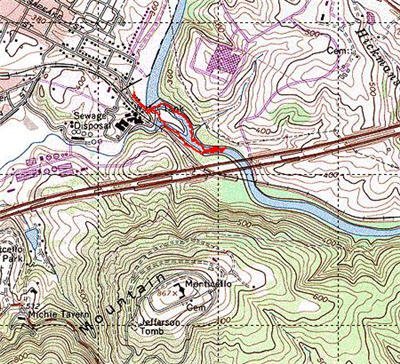
There is also a good amount of structure. In addition to trees which have fallen into the river, there is enough variation in the bottom to provide hidden points where fish will hold. I’ve already mentioned the grass beds and they are a great feature. While I had fun in the flatwater sections with the dry flies, you probably should just go right to the riffles and work the deep spot that is always associated with them if you’re hunting big game.
On my way back out, I did not want to wade all the way upstream. I found a faint trail that runs on the west side of the river. While it comes and goes, it does provide faster movement than sticking to the river. There were lawn chairs and bait containers littered along the trail, so I expect that the river does see pressure at times.
Last year, when I fished for smallies on the upper Potomac. I stuck exclusively with dry flies. I now realize that while I had fun, I missed a great opportunity to catch some big fish. When I hit the Potomac this year, I’ll do dries but also start to work the bottom like I did here.
I was favorably impressed with this River. At the access point, the River takes a tight bend and is only 30 to 40 feet wide. As it moves south, it spreads out to 70 feet wide in places. However, each wide spot features a tail where the water constricts, assembles momentum, and tumbles down a small gradient.
Rivanna River Fishing Bottom line: I’ll be back here in a heartbeat. The Rivanna stretches for miles downstream, and there are a few other access points that would permit me to wade fish. Based on my experience in a densely populated Charlottesville area, it can only get better the farther you move away from the population. I’m anxious to get back and investigate the other access points that Hart calls out in his book.
Getting There: Mapquest yourself to Charlottesville and find Route 250. From Route 250, turn south onto East High Street and then take a left onto Meade Ave. Follow Meade for about 1/2 mile and then turn left onto East Market Street. Follow it to the end.
Secrets Revealed? No. I was surprised that the VDGIF site did not discuss this river. The only mention of the Rivanna is associated with the Reservoir. However, Hart covers the river extensively in the Flyfisher’s Guide to Virginia. You can read it to see the other access points…. or just wait for me to get to them.
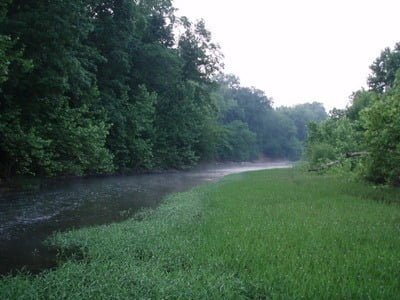
Looking downstream from the access point
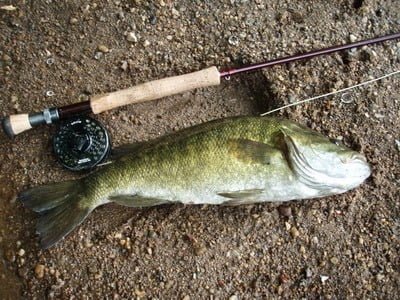
Caught and RELEASED – what a beast
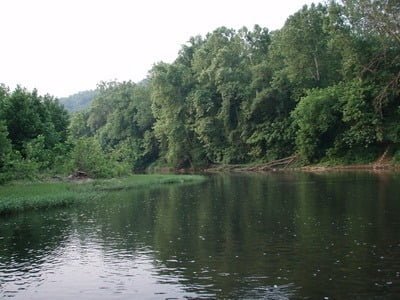
Broadens and opens up
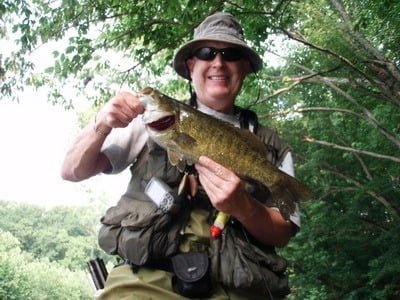
This guy is still there – released unharmed
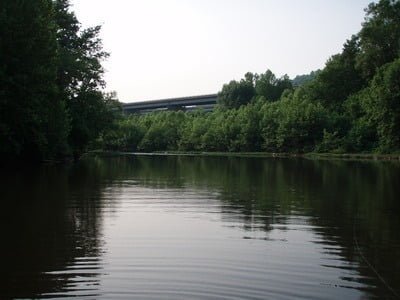
One of the “lakes”
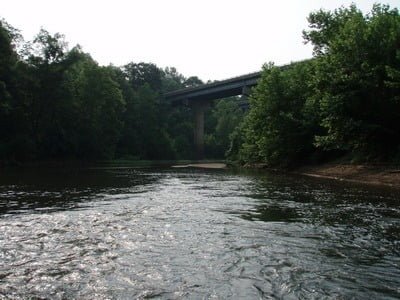
Nice deep section here
Unless stated otherwise, this article was authored by Steve Moore

